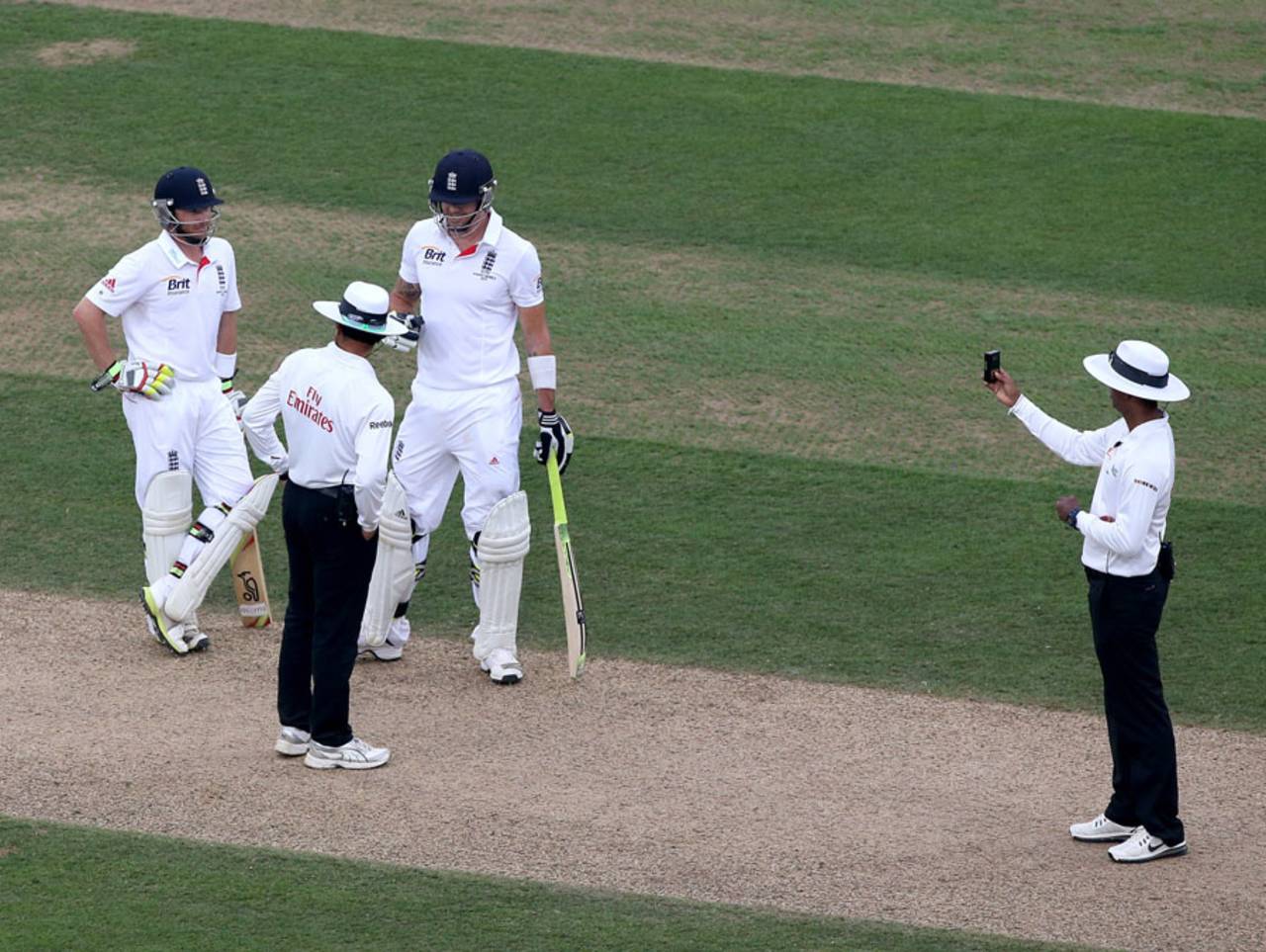Question: How long do you think the ball is in play during an average day's cricket? I doubt many of us have undertaken a formal time-and-motion study to work it out, so I'll have a go at a guesstimate.
For the sake of argument let's count the ball as being active from the moment the bowler starts his run-up to the point it either crosses the boundary or is back in the hands of the wicketkeeper or bowler. There can be a lot of variation in that - a dot ball from a spinner will be completed far quicker than an all-run three off a pace bowler with a long run-up - but after timing a few clips on Youtube I'll take a guess that on average the ball is in play for six or seven seconds per delivery.
Over the course of the 90 overs you get in a day of Test cricket that works out to about an hour of play. One hour of actual cricket, with the other five hours in the day filled with umpires handing the bowlers their sweaters back, captains moving long-on to mid-on, changing their minds, then moving them back again, and Jonathan Trott taking guard.
Put in those terms it's easy to see why people who don't "get" cricket complain that it's too slow. They have a point. Compared to many other sports, cricket moves at a glacial pace. But then for those of us who love the game, that's part of the appeal. A day's play leaves room for you to do other things: read the newspaper, catch up with friends, have something to eat and drink, and most importantly, study the game as it unfolds in front of you.
Whether you're watching a Test match, an ODI, or a game of T20, you become sensitive to its rhythm. You know when a crucial passage of play is accelerating the game forward, and you can feel when the fielders are dragging their feet to slow down the opposition or are just taking too damn long to get through their overs.
That issue of slow over rates has been discussed a lot since the final Ashes Test at
The Oval. Understandable given how slow play contributed to a farcical situation where the match was called off within ten minutes or so of a result being reached - professional cricket's apparent determination to do anything but stay out in the middle and entertain the paying public being yet another reason why some people don't "get" the game.
Subsequent media discussion of how to deal with slow over rates has largely framed the issue as one of value for money for the public, although from my experience frustration comes more from the unpredictability of knowing when play will actually finish and you can start the journey home. Call me cynical but I suspect that's the motivation behind media interest in the issue as well. Play continuing till seven in the evening means journalists are filing copy and getting out of the stadium much later too.
But then slow over rates have been a talking point for as long as I've watched the game and the reason they have been such a hot topic hasn't always been the one advertised. Thirty years ago it was an issue that followed the great West Indian side as they toured the world. It was dressed up as concern for the public being short-changed, but in reality was little more than a stick to beat them with, there being precious little chance you could beat them any other way.
In 1984 I paid £5 at the gate at Headingley to watch that West Indian side. Their over rate wasn't great, but when the bowlers included Michael Holding, Joel Garner and Malcolm Marshall, it felt like I was getting reasonably good value for money.
Almost three decades later and slow play is still an issue. What has changed is that the £5 I once paid to watch a day's Test cricket has now become a minimum of £40. When I think about value for money as a spectator, it's the price of a ticket I think of first. Yet that's something that isn't covered nearly as often by the media, perhaps because it's not an issue that directly affects them.
Slow over rates need to be addressed and that debate ought to be covered fully. But for the paying spectator, the only issue in town isn't whether the one hour of actual play they see during a day at a Test is lost in six rather than five hours of field placements and umpires picking their nose. If the cricket media are so keen to demand value for money for the ordinary fan they should be at least as vocal about the exorbitant price of tickets - in England at least - to see international cricket.
Dave Hawksworth has never sat in a press box or charged a match programme to expenses
